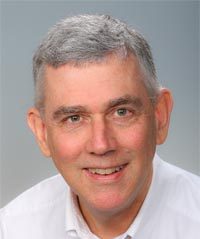 Clint Andrews
Clint Andrews A community is a group of people who share something in common, so what do we share in the IEEE Society on Social Implications of Technology (IEEE SSIT)? We do not share a particular geographic location, native language, religion, culture, academic discipline, or profession. Perhaps, we better fit the dictionary’s secondary definition of community, by having a sense of fellowship because we share common goals. If so, what are those goals?
Our emerging mission is to enhance awareness and understanding of technology’s complex relationship with society by cultivating a recognized global community that engages with today’s most pressing technological challenges and opportunities.
Our governing board has been asking these questions as part of a strategic planning effort. Our motivating vision is for humans to understand technology’s power and mobilize it only for good. Our emerging mission is to enhance awareness and understanding of technology’s complex relationship with society by cultivating a recognized global community that engages with today’s most pressing technological challenges and opportunities. Do you share some of that vision and mission? Please let us know.
A distinguishing feature of viable communities is that their members interact. Territorial communities interact easily because members are physically near one another, whereas relational communities can interact through other types of networked ties not bounded by geography [1]. IEEE has long observed this distinction by organizing both regional activities and technical activities.
Distance frictions have been shrinking, especially due to the pandemic-fueled adoption of videoconferencing tools. The distinction between regional (territorial) and technical (relational) communities has also shrunk. Chapters are the sweet spot in this story because they are simultaneously regional and technical groups. Live-streamed local meetings now get shared internationally, and international conference events get watched and discussed locally, as do publications. For many years, chapters were neglected by the society leadership, but that is no longer the case. There has been much chapter development activity in recent years. Please attend a chapter meeting—or launch a new chapter!
Establishing a sense of community depends on elements of membership (a feeling of belonging), influence (making a difference to other members), reinforcement (fulfillment of needs), and a shared emotional connection [2]. How is SSIT doing on each of these elements?
Establishing a sense of community depends on elements of membership, influence, reinforcement, and a shared emotional connection.
Membership, that feeling of belonging, depends on establishing boundaries to ensure intimacy and a sense of emotional safety that encourages a personal investment and development of a shared identity and language, according to psychologists [2]. My experience of SSIT is that we neither have nor want boundaries, so that any feeling of belonging may derive from another source, such as a shared worldview. Thus, we struggle with membership—we often explain who we are (a cross-cutting society) by referring to who we are not (a technical society). Perhaps, we should redefine ourselves to be the home of the “science” of assessing the social implications of technology. We could establish this as an attractive core interest even if the boundaries of the field are porous. Where do you think our boundaries (or core) should be?
Influence, our ability to make a difference to others, depends ironically on both our openness to one another and the establishment of clear community norms [2]. Consensual validation seems to be what we seek at SSIT. We expect boisterous argument but we also expect courtesy and mutual respect. We use elections, peer-review processes, and awards committees to acknowledge exemplary contributions. Within SSIT, we do a good job on this element. Our external influence does not yet reflect our capabilities, and we need more systematic engagement with the rest of IEEE and the wider world. One focus could be on the development of norms around technological innovation. These need not evolve into formal law—or even nonbinding soft law—but they could signal responsible professional practice.
Reinforcement, the fulfillment of needs, depends on ensuring that our associations are mutually rewarding for all who participate [2]. Each of us needs to get something out of our community. Our conferences, publications, social media content, standards, and volunteer opportunities should include items you want or need. Are you benefitting in one or more ways from the SSIT community?
Shared emotional connection depends, first, on having contact, and second, on having high-quality interactions while so doing [2]. SSIT’s conferences and publications have long provided opportunities for contact, and recent efforts to promote chapter activities and focused committees (such as standards, technical committees, educational activities) are seeking to increase those opportunities. Please join in, and let us know if there is any quality concern.
My view is that we absolutely have established a viable community. However, we have not reflected much on the nature of that community. By discussing its strengths and weaknesses, we can improve it. Please offer your thoughts.
Author Information
Clinton J. Andrews is the President of the IEEE Society on Social Implications of Technology. He is a Professor and the Associate Dean for Research with the Edward J. Bloustein School of Planning and Public Policy, Rutgers University, New Brunswick, NJ, USA.






 JOIN SSIT
JOIN SSIT